Vishu Kaineettam from Evoor Major Sri Krishnaswamy Temple this Vishu season
A journey to a land where stories of Mahabharata sleep – Onattukara, a place which earned fame to have Onam sadya every day. Let’s start telling story of temple before reaching there, the story of Evoor and Evoor Major Sri Krishnaswamy Temple, also known as Guruvayur of Onattukara.
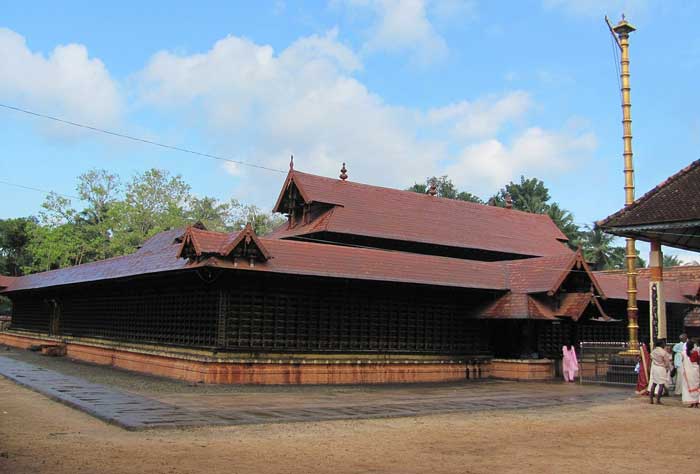
Years back, the place was a dense forest, named Khandava, filled with medicinal plants and big trees. The forest was filled with wild animals too. A powerful ruler named Shvetaki conducted a yaga, which lasted for 100 years. As instructed by Lord Shiva, yaga was done under saint the guidance of Saint Durvasa. As it lasted for a long time, while Lord Agni was devouring clarified butter uninterrupted, he got some stomach ailment. Agni Deva prayed to Lord Brahma to give him a solution. Brahma advised him to consume Khandava forest, as it is filled with medicinal herbs. Thus Agni reached there to eat the forest.
Indra’s friend Thakshaka was residing in that forest. When fire started spreading, to rescue his friend, Indra intervened and with his thundershowers, stopped him. Sad Agni again reached Brahma. Lord consoled him and asked him to tell Lord Krishna and Arjuna the matter. What happened next? Let’s enter temple and resume later.
The story of origin of Krishna temple
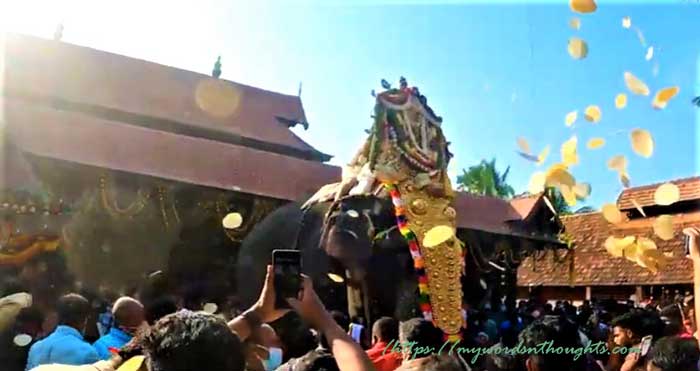
When you enter the temple through east side of Gopuram, you can see the temple roof covered in brass. In the peaceful atmosphere, devotees are praying to Lord Krishna and circumventing the space too. The idol of Lord Krishna has four arms (in Chaturbahu form). Krishna smiles in the camphor smell spread everywhere.
Almost every ritual performed in ancient temples of Kerala are done here too. Many great stories and traditions still sleep inside the temple premises. Every year on Makara Sankramam (first day of Malayalam month Makaram), Garuda printed flag is hoisted (Kodiyettu) to start annual celebrations which lasts for 10 days. Both Ashtami Rohini day (Sree Krishna Jayanthi) and Vishu are considered as auspicious. Kala-kettu (decorated effigies of Bulls) displayed on 9th day festival is very famous. Flag is lowered on the 10th day following Aarattu – the holy bath of deity.

The big Balikal Pura (the main sanctum) is almost the same height of man. Its upper part is filled with beautiful sculptures. It resembles a beautiful poetry written in two spaces, one above another. One space is filled with the story of Ramayana – from the birth of Rama to his coronation, and second one with Mahabharata. When you circumvent the whole temple once, Ramayana will go as a reel in front of you. In the second space the story of Lord Shiva, Arjuna and Pasupata is inscribed. Tools have powerfully written the story of how Lord Shiva tested Arjuna and finally gave him the weapon.
Let’s continue our story, story of origin of temple. Lord Agni sought the help of Krishna and Arjuna. Arjuna was willing to help him and assisted him to forest. When Agni started to burn the forest, Indra came with rains. Arjuna shot string of arrows using Gandiva and created a sealed space to fully protect the forest from rain falling down. Thus Agni deva consumed Khandava forest, cured his stomach ailment and left the place.
Grateful Lord Agni got wanted to install an idol of Lord Vishnu in that place. The idol which hold the divinity of Lord Vishnu had 4 arms, and Krishna gave permission to install the idol in the place where Arjuna shot arrows. Arjuna did so for the proposed place of the temple. As per belief, Lord Agni and Arjuna installed the idol together, and Lord Krishna himself gave divinity to the idol. As Lord Krishna directly gave divinity to the idol and performed Prana-Pratishta, Vishu season is very significant for the temple. Many books suggest that the temple is thousands of years old.
There is one more story suggesting that Khandava forest was the place of saint Kanva too. He had the idol of Arca Moorthy – a four handed idol of Vishnu, which he requested to spare from fire and was granted and later this idol was installed.
“Sharam Eytha Ooru” (The place where arrow was shot), as time passed by, became ‘Eythoor’ and finally ‘Evoor’. That’s how the place got this name, as per folklore. Names of some more places in the locality are also similar to burned trees and forest. For example: Karippuzha, which means charcoal lake; Kannamangalam – the abode of saint Kanva, Pathiyoor – corruption of Kathiya Oor, a place which was burned; Pandavarkavu, Mannarasala etc are a few more.
Vishu Kaineettam is given by children in Evoor temple
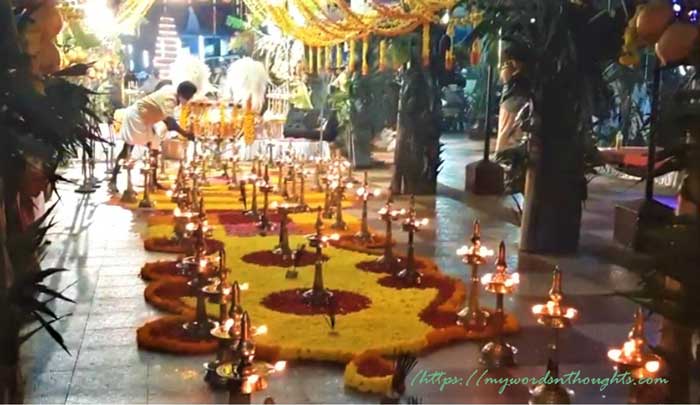
During Vishu season, Konna plant (Cassia Fistula) blossoms here in yellow outside the temple, just like the yellow dress of Lord Krishna. The rich yellow fully covers green leaves during the season. In almost every temple Vishu Kaineettam (coin/rupee) given by elders to people on Vishu day morning. But here, kids give Kaineettam to elders too. This procedure was started some 25 years back, and still continuing every year on Vishu day morning and thousands of people reach here to seek the blessings of Krishna on this day. More than 20K rupees are given to devotees in the form of coins every time.
There is a story behind this special Kaineettam given by kids. A member from the temple committee had a vision in his dream some years back. He dreamt that a boy who came out from Sreekovil took coins from urli and distributed to others. The devotee identified him as Lord Krishna himself, and told to temple authorities about the dream. At that time people of older generations reminded them about ‘Trimadhura’ (Three sweets) oblations, which have been stopped some time ago. Devotees used to offer Krishna with Kadali banana, jaggery and honey, along with ghee in banana leaf tips. When they realized that Lord Krishna made them remember everything, they decided to resume this custom as well. Along with 1-rupee coin, children also distributed Trimadhura to devotees on Vishu day.
Coins to be dispersed next day will be kept in an urli in sree kovil one day before. After Vishu darshan at temple in the early morning, both Trimadhura and coins will be distributed by kids. Last few years saplings of trees are also distributed free as Vishu kaineetam. As Vishu festival is deeply linked to agriculture, this procedure is relevant even in present times. Vishu Sadya is also done every year. For more than 12 years, the Vishu sadya is conducted by a person belonging to another religious belief, says the temple authority.
Velakali and Pappadam Parappikkal (Pappad Flying)

Velakali is conducted in Evoor Major Sri Krishnaswamy Temple from 3rd day to 9th day of annual celebrations. When Ezhunnallath (procession) of Lord Krishna reaches Aanakottil, Velakali performers start off from east side of the temple. After circumvention of the temple, Kulathil Vela (Play in the pond) starts off. There is a temple pond named Velakulam, and lord forces the performers to jump into temple pond. They reach other side of pond and continue with their performance. Velakali is conducted in the belief that lord Krishna got rid of evil forces.
In front of Sree Bhootanathan, there are rituals like flying off betel leaves and pappadam. Devotees offer betel leaves and pappadam in front of lord, and the devotee himself fly papads in front of the idol. Devotees also take such ‘flying’ pappads to home. It’s done only during the procession of Aratt (final ceremony), and devotees fly thousands of pappad bundles that time.
The dream which led to renovation of Evoor temple in the 19th century

When you circumvent the temple, you finally reach the Oottupura (the dining hall were devotees are served with food) of the temple. It was constructed by Alummoottil Sekharan, before the time of temple entry proclamation by Chithira Thirunal Maharaja. At that time, he didn’t have the permission to enter temple. Yet, standing outside, he supervised whole construction process of the hall.
The temple with brass fixed roof was constructed during the rule of Sree Moolam Thirunal of Travancore. Once he was on a tour to Kashi. He had a weird dream that fire & fumes rose around Krishna, who was playing flute. Next day a messenger reached him with the bad news that the Evoor temple caught fire. He also gave Maharaja the news that before sacred sanctum caught fire, the main priest reached there through pond, took the idol from sanctum and placed in oottupura. As Maharaja saw it in dreams, he gave order to renovate the temple.
Bhoothanathaswamy and Yakshi Amma – the only subdieties
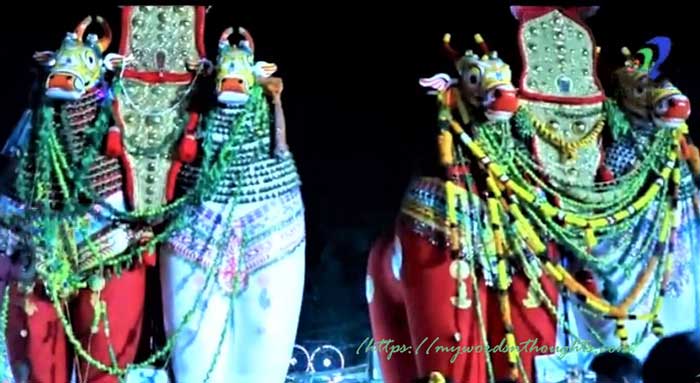
Unlike other temples, Evoor Krishna temple has one subdiety – Lord Shiva in the form of Kiradamoorthy and goddess Parvati in the form of Yakshi Amma next to him, in a stool. Bhootnath has no sanctum or roof, and he resides outside the main temple, exposed to rain and sun. One of his major offerings is Kathakali. To fulfil their wishes, devotees perform kathakali in front of him. More than 175 performances happen every year. During Avatar Pooja, some people perform Kathakali with Krishna as one among characters.
The main idol of Krishna has 4 arms. He holds Panchajanya, Sudarshana and butter in three arms, and placed his fourth arm in hip. There is one special offering in this temple, which is not done in other Krishna/Vishnu temples. It’s Raktha-pushpanjali, because the deity exists in furious form here.
Temple doors are shut now after noon pooja. Temple premises almost isolated now. Perhaps Krishna is playing one of his leelas behind those banyan leaves, hidden from everyone.
This is my Vishu Kaineettam to all readers. Happy Vishu, everyone.
Also read a few more articles related to Kerala temples. Click on the images in the gallery to read.


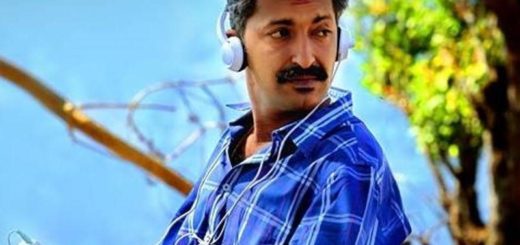
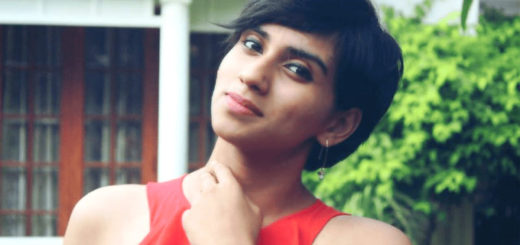









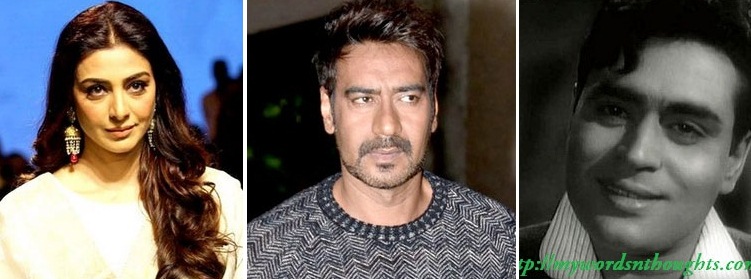
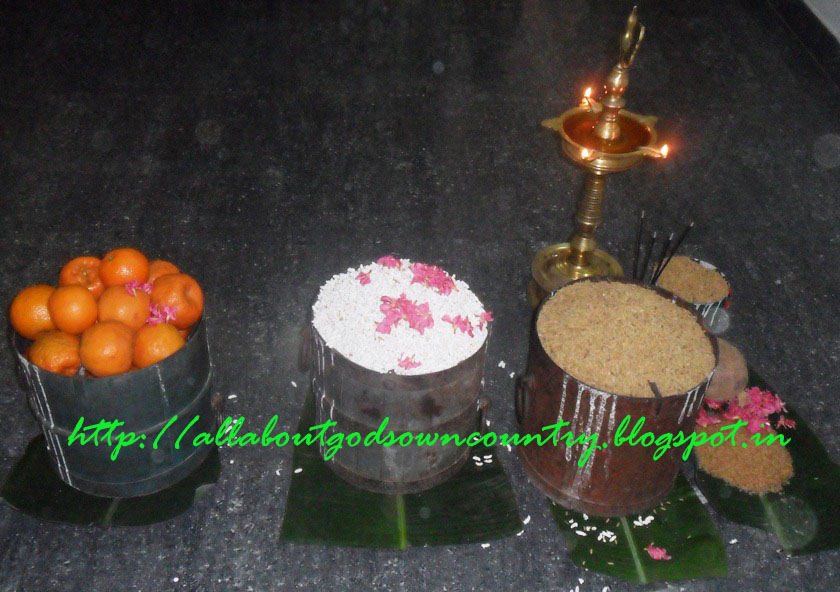
Recent Comments